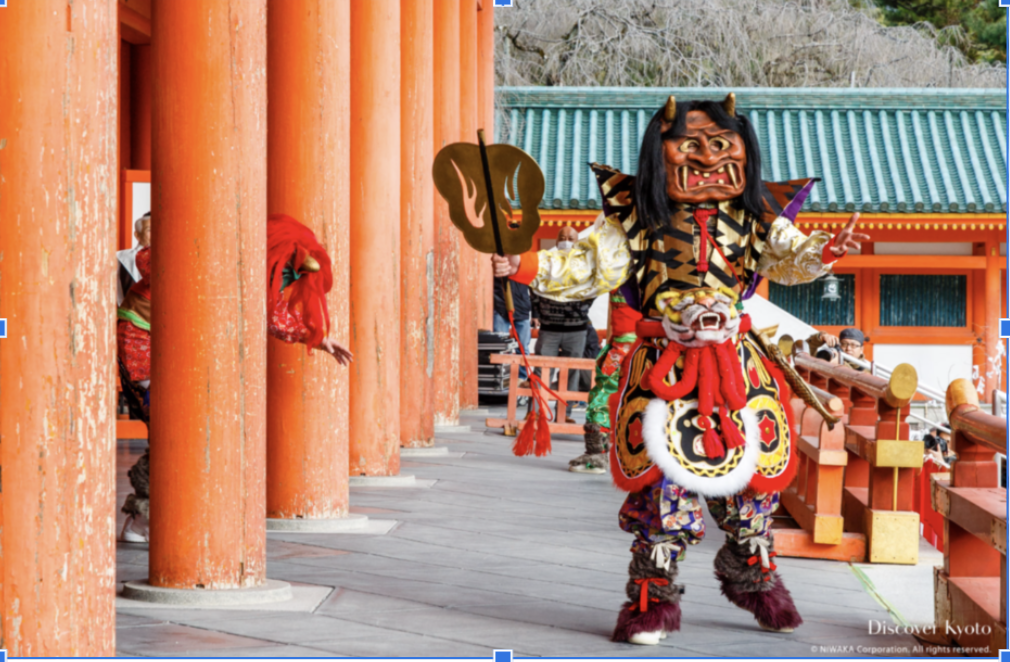Did you know that there is a beautiful annual Japanese tradition in which participants tend to throw roasted soybeans to drive away evil and invite prosperity? What if I mentioned that this festival takes place on February 3rd and dates back 1000 years to the Heian period? Like many others, this remarkable event took place this year and was yet unheard of by many worldwide. Setsubun-sai is a unique cultural tradition that marks winter’s concluding phases to spring’s blooming- the transitional period between dark and light. It’s a culminating point for iconic practices, distinctive foods, and spiritual blessings that unite families, communities, and the whole of Japan in celebration. Through historic reenactments of fire rituals, elaborate shrine ceremonies, and even sumo wrestling in front of crowds of thousands of people, Setsubun-sai is undoubtedly an unforgettable festival with a beautiful deeper meaning.
Originating in China, Setsubun-sai has a rich history that spans over a millennium. The Chinese ritual named Tsuina (追儺) was first introduced to Japan in the 8th century, in which the festival bases the underlying meaning of warding off evil spirits – however, in a completely distinctive way compared to modern-day celebration. As mentioned in the famous historical text Shoku Nihongi, Tsuina was held in the imperial court on the last day of the year according to the Lunar calendar. The palace was ornamented with clay figurines of cows and children. Furthermore, aside from the decorations, peach branches were used to ward off evil spirits that could catalyze major misfortune and disease. During the Heian period, the tradition evolved into an annual event that took place at the imperial court. Not long after, an activity called “Mameuchi” was introduced to the ceremony, where the elected person would wear a golden mask and shield while scattering beans towards several government officials dressed as ogres, with, the costumes reflecting fatal plagues or natural disasters. Throughout the consecutive Kamakura and Muromachi periods, the celebration became accessible to all social classes, allowing temples and shrines to adopt the tradition and the common people to participate in its annual ceremony. Finally, by the Edo Period, which spans from 1603 to 1867, Setsubun-sai became a central activity in Japan and moved from New Year’s Eve to early January instead. A common tale told to unfold the tradition recalls a monk on Mt. Kurama who escaped death by binding his capturers, demons, with roasted beans. The culmination of history that formed Setsubun-sai adds layers to a millennium-deep tradition, polished with special meaning behind every ceremony.
Each region celebrates uniquely, as Setsubun-sai is a colorful festival with a shared significance. Typically, the male head of the household or the person born in that zodiac year will throw roasted soybeans while shouting “Demons out! Good luck in!” both within and outside of their home. Furthermore, it is custom that everyone eats one soybean for each year of their age, and then always an extra one for good luck in the following year. Another fun tradition within the family is when someone is chosen to wear the oni mask (demon mask), usually depicted with horns, sharp teeth, and red scaly skin while the rest of the family members throw beans at them –- a smaller scale version of the tradition celebrated in ancient imperial courts. Alongside the many temples and shrines that participate in Setsubun-sai, performances such as fire rituals, exorcism reenactments, sumo wrestling, and Shinto rituals are also widely popular. And of course, it is important to note the wide variety of meals and foods typical to Setsubun-sai. For example,- Ehomaki, the lucky sushi roll, is an uncut sushi made with seven ingredients meant to be eaten while facing the year’s lucky direction (this year, 2025, was the west), oftentimes in silence. These cultural practices make Setsubun-sai a lively and meaningful celebration across Japan.
The singular celebration revolves around the core elements deeply rooted in Japanese culture, allowing participants to commence the spring with renewed values. The act of bean-throwing represents driving away evil spirits of death, plague, misfortune, and misery of the winter through purification and renewal in the face of a lighter season. The festival emphasizes a bond between human life and natural rhythms, highlighting the significance of harmonizing with nature in Japanese culture. By inviting good fortune in and recognizing the beginning of a new season, Setsubun-sai brings people together in a shared moment of connection, renewal, and hope for the year ahead.
Ishimoto, Nodoka. “Fukuoka Setsubun Guide 2025.” Fukuoka Now, 31 Jan. 2025, www.fukuoka-now.com/en/setsubun-guide/.
MUSUBI, Team. “All about the Setsubun.” MUSUBI KILN, MUSUBI KILN, 19 Jan. 2023, musubikiln.com/blogs/journal/all-about-the-setsubun.
“Setsubun-Sai at Heian Jingū.” Discover Kyoto, www.discoverkyoto.com/event-calendar/february/setsubun-sai-heian-jingu/. Accessed 7 Feb. 2025.
Travel, Japan Wonder. “What Is Setsubun? Traditional Bean-Throwing Event in February.” Japan Wonder Travel Blog, 26 Jan. 2025, blog.japanwondertravel.com/what-is-setsubun-22094.
Writers, YABAI. “Setsubun: The Bean Throwing Festival: Yabai – the Modern, Vibrant Face of Japan.” YABAI, yabai.com/p/3056. Accessed 7 Feb. 2025.

